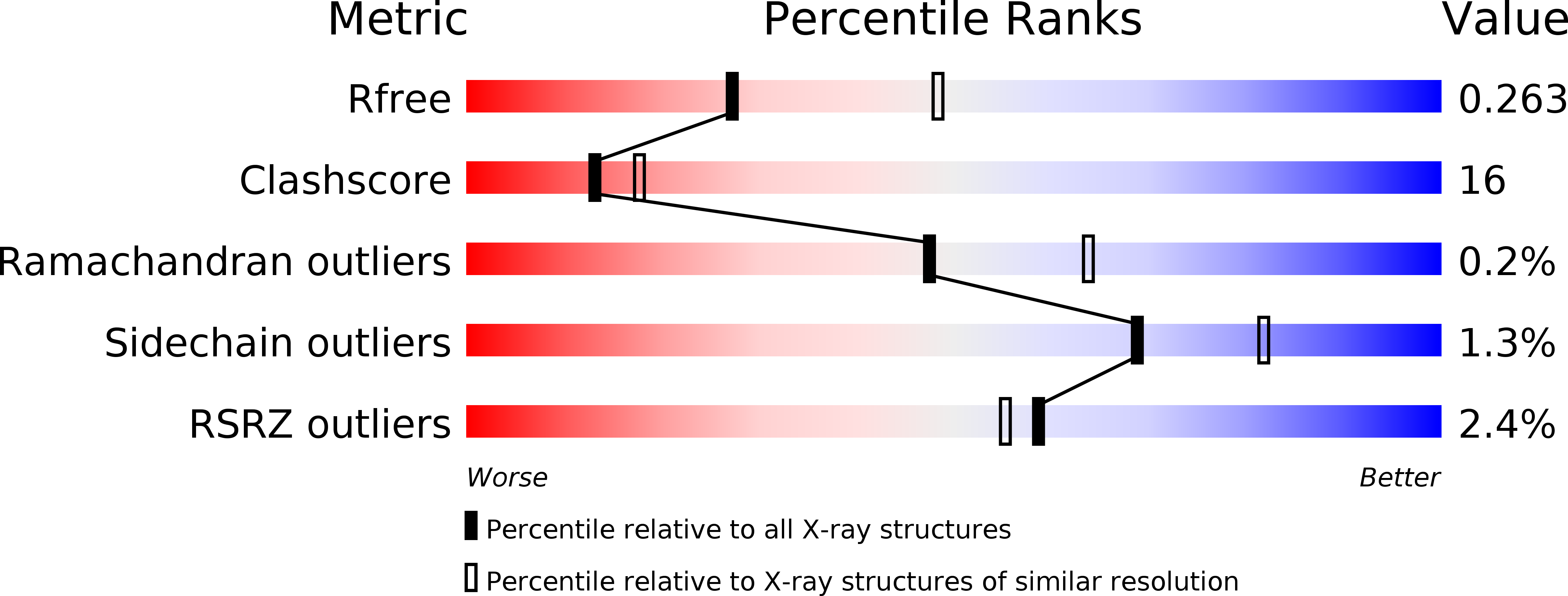Crystal Structure of the Csm1 Subunit of the Csm Complex and its Single-Stranded DNA-Specific Nuclease Activity.
Jung, T., An, Y., Park, K., Lee, M., Oh, B., Woo, E.(2015) Structure 23: 782
- PubMed: 25773141
- DOI: https://doi.org/10.1016/j.str.2015.01.021
- Primary Citation of Related Structures:
4UW2 - PubMed Abstract:
The CRISPR-Cas system is the RNA-guided immune defense mechanism in bacteria and archaea. Csm1 belongs to the Cas10 family, which is the common signature protein of the type III system. Csm1 is the largest subunit of the Csm interference complex in the type III-A subtype, which targets foreign DNA or RNA. Here, we report crystallographic and biochemical analyses of Thermococcus onnurineus Csm1, revealing a five-domain organization and single-stranded DNA (ssDNA)-specific nuclease activity associated with the N-terminal HD domain. This domain folds into permuted secondary structures in comparison with the HD domain of Cas3 and contains all the catalytically important residues. It exhibited both endo- and exonuclease activities in an Ni(2+) or Mn(2+)-dependent manner. The narrow width of the active-site cleft appears to restrict the substrate specificity to ssDNA and thus to prevent Csm1 from cleaving double-stranded chromosomal DNA. These data suggest that Csm1 may function in DNA interference by the Csm effector complex.
Organizational Affiliation:
Department of Biological Sciences, KAIST Institute for the Biocentury, Korea Advanced Institute of Science and Technology, Daejeon 305-701, Korea; Functional Genomic Research Center, Korea Research Institute of Bioscience and Biotechnology, Daejeon 305-333, Korea.




















